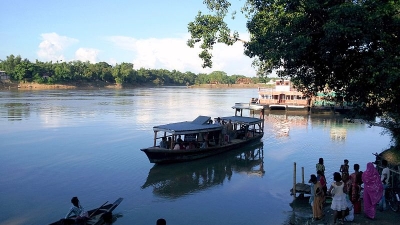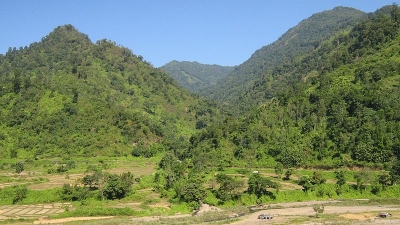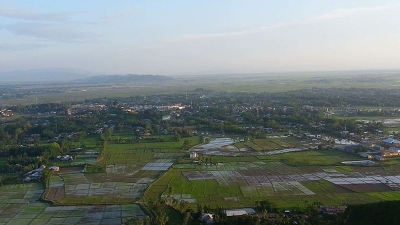Imphal Attractions - Tourist Places To Visit In Imphal
-
01Palace Of Kangala
+ Read MoreA place of pride for the Manipuris, the Palace of Kangla has been standing strong since the 17th century. Kangla comes from the Meitei word meaning ‘dry land’. The Palace of Kangla, commonly known as the Kangla Fort is situated on the banks of the Imphal river and can well be described as a fortress city.
Though much of it is in ruins now, it isn’t difficult to guess that once it held important political and religious significance. The Palace of Kangla also served as the seat of the Meitei kings who ruled over Manipur. The astounding brick walls served as a prison in 1632 AD when Chinese prisoners were captured and kept here.
After the Manipuri kings lost to the British in the Anglo-Manipur War in 1891, the fort was occupied by the security forces. Even after Independence, the Assam Rifles occupied the fort, and it was only in 2004 that it was handed over to the state government.
-
02Wangkhei Shree Govindajee Temple
+ Read MoreShree Govindajee Temple is one of those auspicious yet unassuming temples one finds where sanctity and piety come without any guidance. It is a Vaishnavite centre and is one of the main temples of Manipur.
Located near the Maharaja’s Royal Palace, the temple is divided into two parts, the internal sanctum and the outer jacket. Lord Govindajee is placed in the inner sanctum while idols of Jagannath, Subhadra, Balaram and Krishna are placed on the chambers or shrines known as Salas around the temple.
Plaster and wood have been used to make all the idols. The temple was built around 1846 by the king ruling Manipur. It is located just 1km from the town centre. Wangkhei is the handloom and handicrafts locality of Imphal. The entire state handloom is primarily made here and sent to the other parts of the city and state. Here, the women are the primary weavers.
-
03Matai Garden
 + Read More
+ Read MoreMatai Garden, located about 8 km away from the town of Imphal, is also known as Ibudhou Asheiningthou Garden. Matai is one of the local Gods and has been derived from the word Ibudhou Asheiningthou. The Garden is located in Matai, East Imphal district.
One of the special attractions of the Matai Garden is the beautiful and well-shaped Duranta plant. The Duranta plant fills most of the garden space and is beautifully grafted. The garden is otherwise a great outdoor location to spend a perfect day. The greenery all around and the near-perfect landscape makes the environment soothing and ideal.
For environmentalists and nature lovers the Matai Garden is the perfect place where you can stroll around without a worry of the world, check out the many varieties of plants, shrubs and trees, see the flowers blooming colourfully, etc. The Matai Garden also serves as a beautiful picnic spot.
-
04War Cemeteries
 + Read More
+ Read MoreWar has been a part and parcel of the history of Imphal and Manipur, largely, over centuries. The city has borne the burns of many wars and has always shown resilience to emerge a winner. The city has silently witnessed several wars over the centuries and the War Cemeteries were built as a tribute to all those killed in these wars.
Maintained by the Commonwealth War Graves Commission, the War Cemeteries was built primarily to pay tribute to the British and Indian soldiers who were killed protecting the territory from the Japanese invasion during the Second World War.
The War Cemeteries are located 10 kilometres from Imphal on the Imphal-Dimapur Road. Thousands of soldiers have been rested here and their graves are marked with stone markers or bronze plaques. Though a cemetery, the place is very calm and serene. It reminds us of the valiant warriors without whom India would have failed to participate in the Second World War.
-
05Manipur Zoological Gardens
+ Read MoreThe Manipur Zoological Gardens has been specially constructed for the preservation of rare species. Located about 8 km from Imphal on the Imphal Kangchup Road, the Manipur Zoological Gardens covers an area of 8 hectares. It is also known as the Jewel Box of Manipur as it is truly the house of some endangered species.
Among the protected species found in the Manipur Zoological Gardens, the Lissome and the brow-antlered Thiamin deer (the Sangai) are popularly known. There are more 55 species of birds and 420 kinds of animals to be found here. It is also home to about 14 endangered animals.
On the south of the Garden lies the Manipur Agricultural University, in the west lies the Langol Road while the other parts are covered with paddy field. The Manipur Zoological Gardens is all greenery, a soothing sight for the tired bodies. A day can be well spent here.
-
06Manipur State Museum
 + Read More
+ Read MoreThe Manipur State Museum was established to preserve the rich culture and heritage of Manipur. Inaugurated by Late Indira Gandhi, the former Prime Minister of India in 1969, the Manipur State Museum is a storehouse of information on archaeology, ethnology, natural history, Jallan and painting.
Located close to the Polo grounds in Kangla, tourists can easily plan a visit to all these places in a single day. One of the prominent artefacts in the museum is the Hiyang Hiren (the Royal Boat), a 78 ft long boat that is displayed in the open gallery. The museum has several other galleries, each providing information on different subjects.
The Manipur State Museum regularly organises activities and programmes on culture, biology and museum awareness. Mobile exhibitions and science fairs are also organised by the state museum. The Museum is open Monday to Saturday (except holidays) from 10 am to 4:30 pm.
-
07Imphal Valley
+ Read MoreThere are several small rivers flowing down the hills in Manipur. Several of these have drained over to the Imphal Valley giving it an oval shape. The Imphal Valley covers 1843 sq km and accounts to one-tenth of the area of Manipur. The Valley also accounts for 70 per cent of the population in the state.
Some of the rivers that flow down to the Valley are Imphal river, Khuga, Iril, Thoubal and Sekmai. There are numerous lakes, swampy areas and marshes in the Valley. The most famous of the lakes in the area is the Loktak Lake known to be the largest freshwater lakes in north-east India.
The Loktak Lake is also called the Floating Lake and is one of the major tourist attractions in Manipur. Apart from the Loktak Lake, the Imphal Valley also has several other tourist attractions such as the Palace of Kangla, Manipur State Museum and the Polo Ground.
-
08Ima Keithel
 + Read More
+ Read MoreOne of the most unique places in the world, the Ima Keithel at Khwairamband Bazar is the only women’s market. Run entirely by women you can get anything and everything at Ima Keithel. If in one corner a woman is busy weighing a kilo of fish, in another corner amidst the cacophony, a woman can be found knitting and selling freshly made woollens to happy customers.
A tradition that is more than 100 years old, the Ima Keithel is a pure sign of women’s equality and independence. Not a single man is found selling anything here and more than 3000 women have set up their businesses here. From vegetables to fish to handloom and handicraft, you can find anything in Ima Keithel.
Ima Keithel is a Manipuri word where Ima means “mother” and Keithel means “market”. Irrespective of communities and religion, any woman can set up a store here.
-
09Polo Ground
 + Read More
+ Read MorePolo Ground is the oldest polo ground in the world. Polo, though popularised by the British, originated in Manipur where players on horseback are required to score goals to win. It is a team sport. The game in Manipur was known as Kanjai-bazee, Sagol Kangjei or Pulu, the word which in an anglicised form is today known as Polo.
References of the Polo Ground in Imphal can be found in the royal chronicle Cheitharol Kumbaba written in about 33 AD. Many important personalities and players of the game have visited Imphal to play in the Polo Ground. The father of modern Polo, Lieutenant Sherer, had visited the grounds in the 1850s. Lord Curzon the viceroy of India had also visited the grounds in 1901.
Till today, every year the game is played in the Polo Ground. The Imphal Polo Riding Club, located in the vicinity of the ground, imparts regular coaching for the sport.
-
10Samban-Lei-Sekpil
 + Read More
+ Read MoreSamban-Lei Sekpil Garden is a popular tourist attraction located 5 km from the Imphal city centre. The Garden is famous for being home to the Samban-Lei Sekpil, a shrub which is 61 ft tall. Because of the astounding height of the shrub it has been recorded in the Limca Book of Records in 1991 and the Guinness Book of Records in 1999.
Samban Lei is a Manipuri word where ‘Samban’ means fencing while ‘Lei’ means flower. The Samban-Lei Sekpil is botanically known as Duranta Repens Linn, a popular shrub found in Manipur. The shrub was found by Moirangthem Okendra Kumbiin 1983 and named it Samban Lei as these kinds of shrubs are popularly used for fencing houses in Manipur.
Initially the plant was moved around for public exhibitions, but as it grew in size, moving it became difficult and was thus placed permanently in the gardens. The shrub is also known as sky flower.
-
11Hanuman Temple At Mahabali
 + Read More
+ Read MoreAmong the many temples in Imphal, the Hanuman Temple stands out as one of the most revered temples in the city. Situated on the banks of the Imphal river in the Mahabali forest, the Hanuman temple has a human form idol of the monkey God carved out of a single slab of stone.
A very old temple believed to have been built around 1725, the Hanuman Temple was probably constructed by King Garib Niwaj. It is also believed to be the only temple built in that era. The architecture of the temple has resemblance to a Bengali-style dome-shaped hut.
The Hanuman Temple stands out as a historical and archaeological evidence of the Ramanandi cult of Hinduism that was followed in Manipur. In the surrounding forests, numerous monkeys can be found, but the amazing thing is that these monkeys never cross the limits of the Mahabali forest and always remain within the temple area.



 Click it and Unblock the Notifications
Click it and Unblock the Notifications









